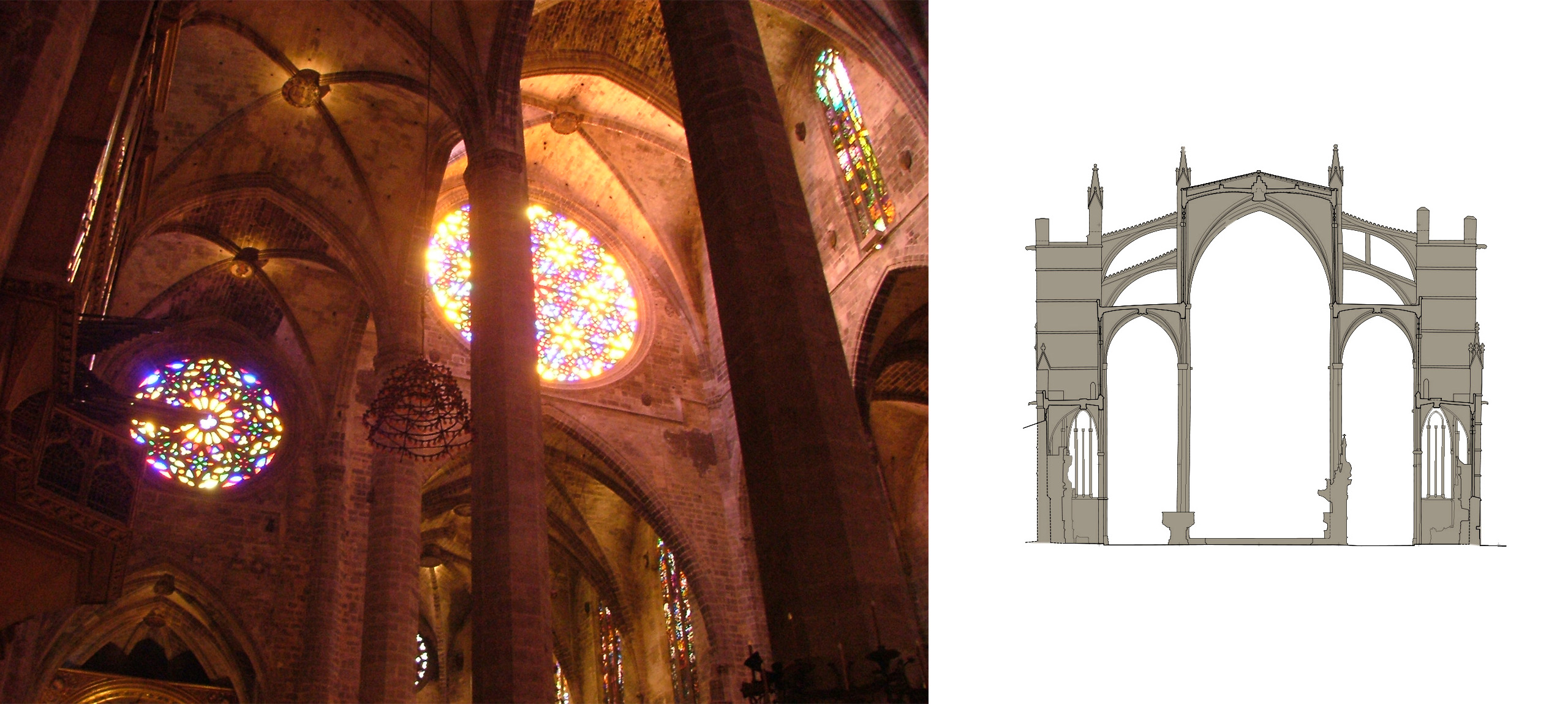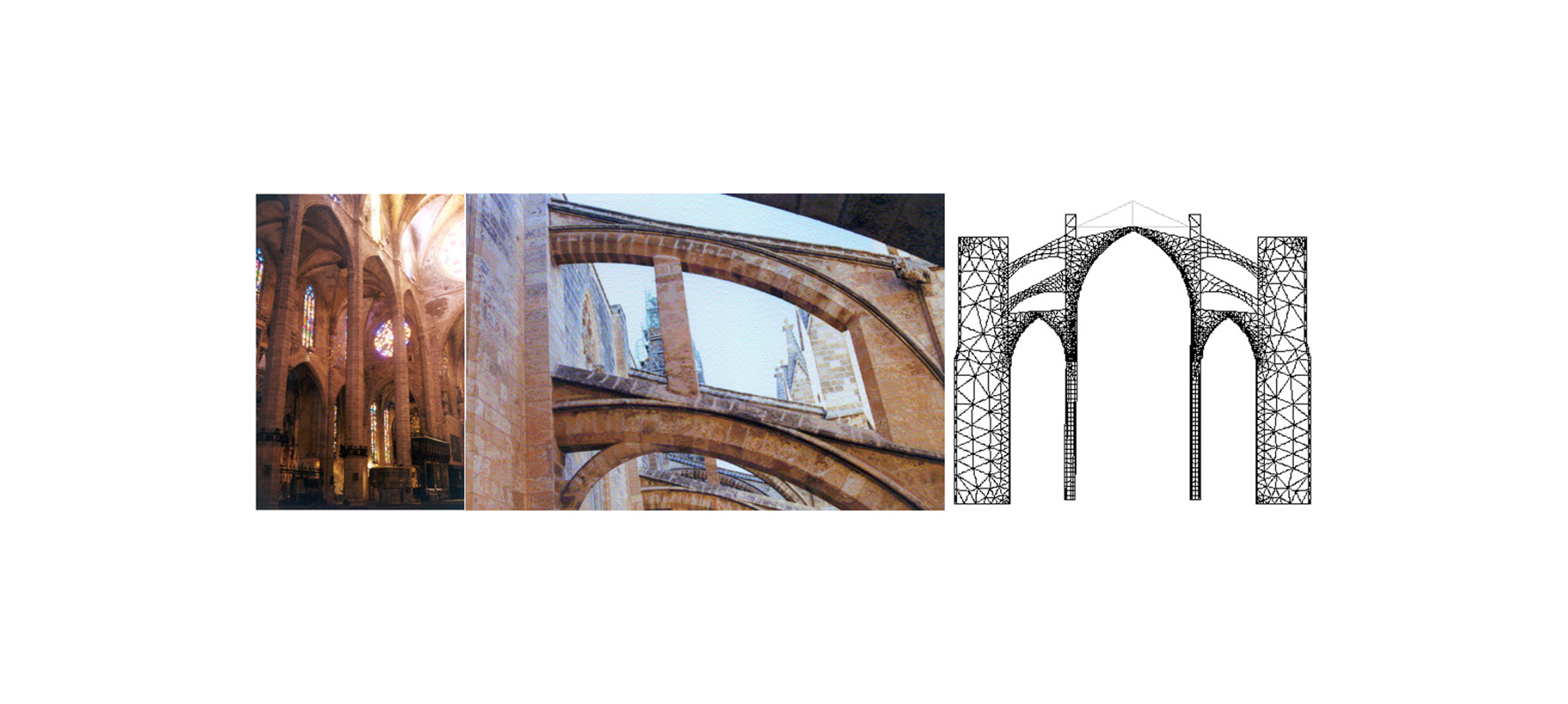
| Palma de Mallorca Cathedral cross-section analysis | |
| Palma de Mallorca, Spain | |
| Structural typology | Bridge Management System |
| Date | July, 2012 |
| Scope | Auscultation and diagnosis |
| Owner | Cabildo de la Catedral de Palma de Mallorca |
The columns of Palma de Mallorca Cathedral, which are the slenderest among Gothic Cathedrals in the world, showed curvatures in the vertical cross section as well as other damage (vertical cracks amongst others). This study was needed in order to establish the Management Program of the Cathedral. Likewise, disorders in the flying buttresses were also detected.
In order to find an answer to this problem, an analytical study of the cross sections structural behaviour was fulfilled. The mechanical behaviour of the masonry had to be characterized, as without recognizing the masonries and their resistant capacity, the degree of the columns’ stability could not have been determined.
From this point of view it has been very useful to observe how the knowledge developed for concrete structures, especially regarding the second order effects analysis, has allowed the study of a masonry structure such as this, to be dealt with. In short, it is a fine example of the manner in which the solution of one structural material can be applied to other materials, permitting the solution to which, are otherwise, rather frequent problems.
In order to find an answer to this problem, an analytical study of the cross sections structural behaviour was fulfilled. The mechanical behaviour of the masonry had to be characterized, as without recognizing the masonries and their resistant capacity, the degree of the columns’ stability could not have been determined.
From this point of view it has been very useful to observe how the knowledge developed for concrete structures, especially regarding the second order effects analysis, has allowed the study of a masonry structure such as this, to be dealt with. In short, it is a fine example of the manner in which the solution of one structural material can be applied to other materials, permitting the solution to which, are otherwise, rather frequent problems.







